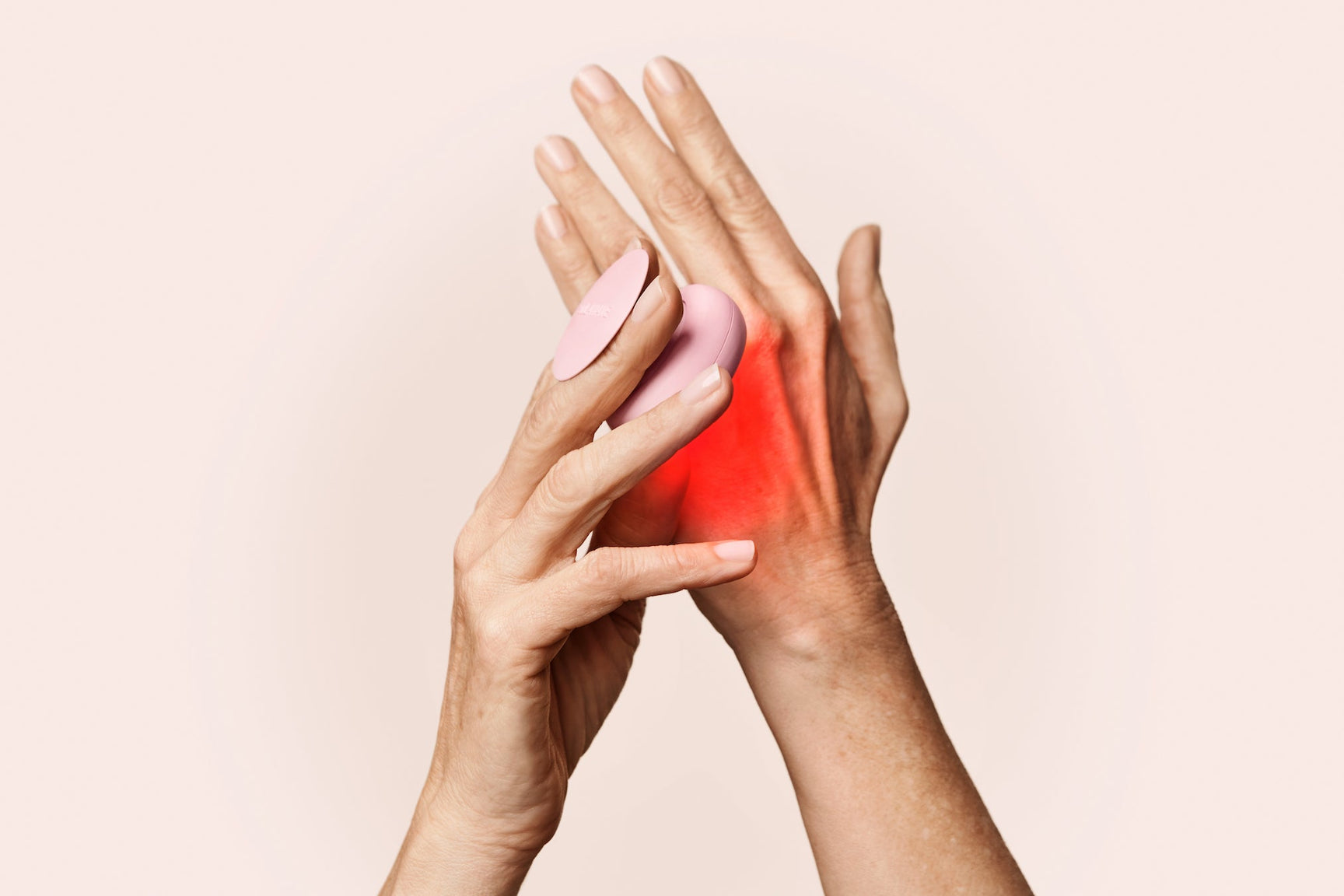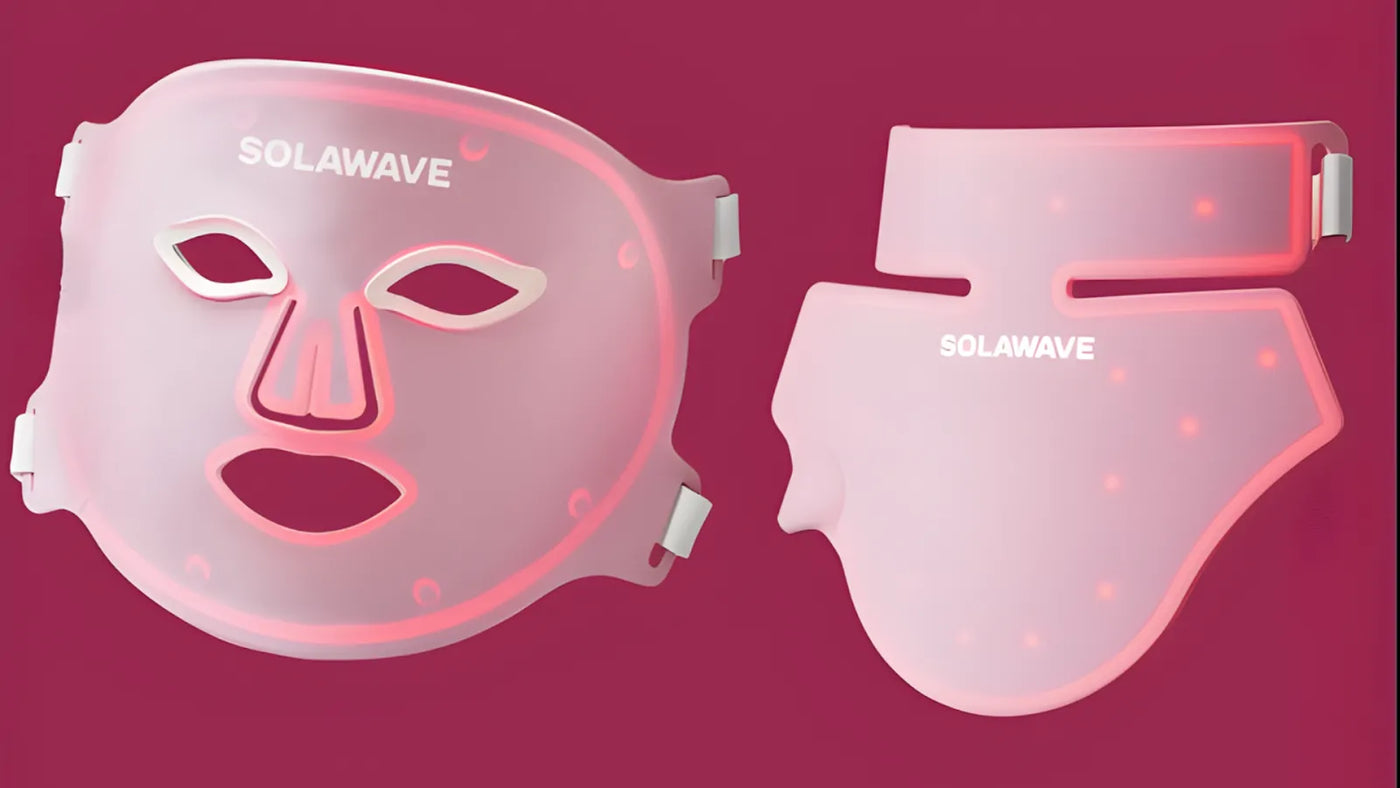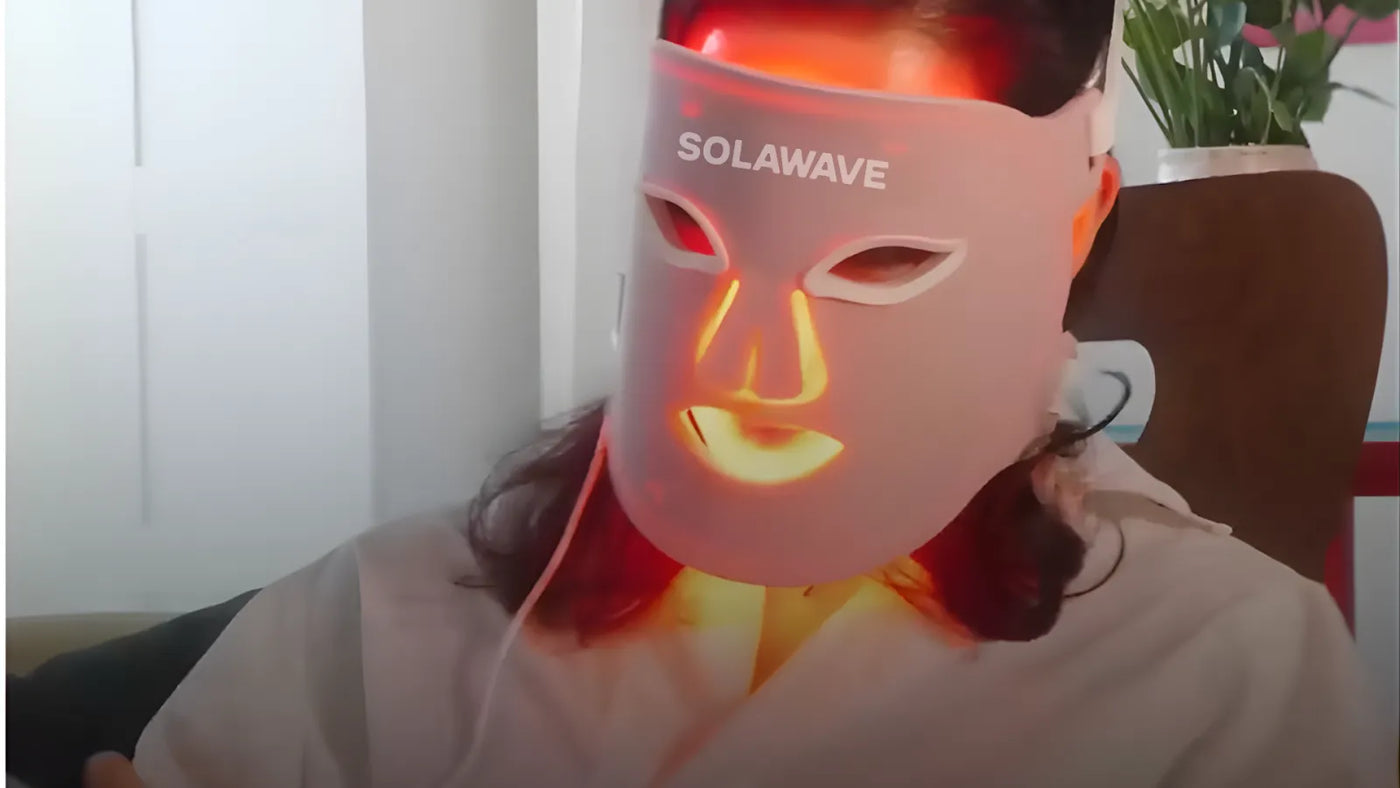

Red Light Therapy For Knee Pain: Fact or Fiction?
Knee pain is one of the most common complaints affecting people of all ages. Whether it’s caused by injury, arthritis, or everyday wear and tear, knee pain can impact your ability to move comfortably and enjoy daily activities. With so many treatment options available, it’s no surprise that new therapies like Red Light Therapy are gaining attention.
But does Red Light Therapy for knee pain really work, or is it just another wellness trend? In this article, we'll talk about what the science says about Red Light Therapy for knee pain, how it compares to proven treatments, and what you should know before considering it as part of your care plan.
What Causes Knee Pain?
Knee pain can stem from a variety of sources, and understanding the root cause of your specific pain is essential if you want to find an effective treatment. Symptoms of knee pain can range from mild discomfort to severe pain that limits your movement. You might experience swelling, stiffness, redness, or a feeling of instability in the knee. If your knee pain is severe, persistent, or accompanied by symptoms like inability to bear weight, significant swelling, or visible deformity, it’s important to seek medical advice promptly.
Arthritis
Arthritis is one of the most common causes of chronic knee pain, particularly among older adults. The two primary types affecting the knee are osteoarthritis and rheumatoid arthritis. Osteoarthritis results from the gradual breakdown of cartilage in the knee joint, leading to pain, swelling, and reduced mobility. Rheumatoid arthritis, on the other hand, is an autoimmune condition where the body’s immune system attacks the lining of the joints, causing inflammation and joint damage. Both forms of arthritis can cause persistent discomfort, stiffness, and a gradual decline in joint function, making everyday activities more challenging.
Injury
Injuries are a frequent source of knee pain and can affect people of all ages. Common knee injuries include sprains, which involve overstretching or tearing ligaments; ligament tears, such as anterior cruciate ligament (ACL) or medial collateral ligament (MCL) injuries; meniscus tears, which affect the cartilage that cushions the knee; and fractures, which are breaks in the bones of the knee joint. These injuries often occur during sports, accidents, or sudden movements and can lead to acute pain, swelling, instability, and sometimes long-term issues if not properly treated.
Overuse
Overuse injuries develop gradually due to repetitive stress on the knee joint. Activities like running, jumping, cycling, or even prolonged standing can strain the knee over time, leading to conditions such as tendinitis (inflammation of the tendons) or bursitis (inflammation of the fluid-filled sacs that cushion the joint). Overuse injuries are common in athletes and individuals with physically demanding jobs. Symptoms often include a dull ache, swelling, and stiffness that worsen with continued activity.
Mechanical Problems
Mechanical problems refer to structural issues within the knee or surrounding areas that disrupt normal movement and cause pain. Examples include misalignment of the knee joint, a dislocated kneecap, or problems originating from the hips or feet that alter your gait and put extra stress on the knee. These issues can lead to uneven wear on the joint, increased risk of injury, and chronic discomfort. Addressing mechanical problems often requires a comprehensive approach, including physical therapy, orthotics, or, in some cases, surgical intervention.
What Helps With Knee Pain?
When it comes to managing knee pain, evidence-based medical treatments remain the gold standard. These approaches are supported by clinical research and are widely recommended by healthcare professionals. Here’s what you need to know about the most effective options:
Physical Therapy and Exercise
Physical therapy is often the first line of treatment for knee pain, regardless of the underlying cause. A licensed physical therapist can design a personalized exercise program to strengthen the muscles around your knee, improve flexibility, and restore normal movement. Targeted exercises help reduce pain, enhance stability, and prevent future injuries. In many cases, consistent physical therapy can delay or even eliminate the need for more invasive treatments.
Medications (NSAIDs, Corticosteroids)
Medications play a key role in managing knee pain, especially when inflammation is present. Nonsteroidal anti-inflammatory drugs (NSAIDs), such as ibuprofen or naproxen, are commonly used to reduce pain and swelling. For more severe cases, your doctor may recommend corticosteroid medications, which can be taken orally or injected directly into the knee joint. These medications provide stronger anti-inflammatory effects but are typically used for short-term relief due to potential side effects.
Injections (Hyaluronic Acid, PRP)
Injections offer another option for individuals who do not find sufficient relief from oral medications or physical therapy. Hyaluronic acid injections help lubricate the knee joint, making movement smoother and less painful, particularly for those with osteoarthritis. Platelet-rich plasma (PRP) injections use a concentrated solution of your own blood platelets to promote healing and reduce inflammation. While some people experience significant improvement with these treatments, results can vary, and more research is ongoing to determine their long-term effectiveness.
Surgical Options (When Necessary)
Surgery is generally considered a last resort when other treatments have not provided adequate relief. Common surgical procedures for knee pain include arthroscopy (a minimally invasive procedure to repair or remove damaged tissue), partial or total knee replacement, and ligament reconstruction. Your healthcare provider will help determine if surgery is appropriate based on the severity of your condition, your overall health, and your personal goals for recovery.
Lifestyle Modifications and Supportive Care
In addition to medical treatments, making certain lifestyle changes can help manage knee pain and improve your quality of life. Maintaining a healthy weight reduces stress on your knees, while using supportive footwear and assistive devices can make daily activities easier. Applying ice or heat, practicing good posture, and avoiding activities that aggravate your symptoms are all important strategies for long-term knee health. Always consult your healthcare provider before starting any new treatment or exercise program.
What Is Light Therapy?
Light therapy, also known as photobiomodulation, is a treatment that uses specific wavelengths of light to interact with your body at a cellular level. It works by delivering energy to your cells, which helps them renew, repair, and restore themselves. Different wavelengths of light penetrate the skin at varying depths, triggering different biological responses. For example, Red and Near-Infrared Light can reach deeper layers of the skin, while Blue Light primarily affects the surface.
Different Forms of Red Light Therapy
Red Light Therapy is a versatile technology, but its benefits depend entirely on the device and its intended use. Skincare Red Light Therapy devices use wavelengths between 630 and 700 nanometers to support healthy collagen production, helping to reduce the look of fine lines, wrinkles, and sagging. These non-invasive, FDA-cleared devices are designed to improve skin tone and texture with consistent use, but they are not intended to treat pain, inflammation, or muscle recovery.
Other Red Light Therapy devices are engineered specifically for therapeutic purposes, such as muscle recovery, pain relief, wound healing, and even hair growth. These often combine Red and Near-Infrared Light to penetrate deeper into tissues, supporting cellular repair and reducing inflammation.
However, the benefits of each Light Therapy device are limited to its intended application — skincare devices will not deliver pain relief, and therapeutic devices are not meant for cosmetic improvements.
Red Light Therapy for Knee Pain: What Does the Research Say?
Scientific research into Red Light Therapy for knee pain has grown in recent years, with several clinical studies exploring its potential benefits for pain relief, inflammation reduction, and muscle recovery. (It’s important to note that the positive effects reported in these studies are specific to devices designed for therapeutic use — not skincare devices like the ones you'll find throughout our site!)
A 2023 systematic review published in Lasers in Medical Science (PMC11750081) analyzed multiple randomized controlled trials on Red Light Therapy for knee osteoarthritis. The review found that Red Light Therapy, when applied with appropriate therapeutic devices, led to significant reductions in pain and improvements in knee function compared to placebo treatments. The authors concluded that Red Light Therapy could serve as a supportive option alongside conventional therapies for knee osteoarthritis.
An earlier study published in Lasers in Surgery and Medicine (PubMed 1727843) evaluated the effects of low-level laser therapy on patients with chronic joint disorders, including knee pain. The results showed that participants receiving Red Light Therapy experienced notable pain relief and enhanced joint mobility, further supporting its potential role in managing chronic knee conditions.
A 2022 review in Frontiers in Medicine (PMC9773374) highlighted that Red Light Therapy, especially when using both red and near-infrared wavelengths, can reduce inflammation and promote tissue repair in musculoskeletal disorders. The review emphasized that these benefits are most pronounced when using devices specifically designed for therapeutic purposes.
Most recently, a 2023 randomized controlled trial published in Pain and Therapy (PubMed 37762594) investigated Red Light Therapy for knee osteoarthritis and found that participants treated with therapeutic-grade devices reported significant improvements in pain, stiffness, and physical function compared to those receiving placebo treatments. This study reinforces the growing evidence that Red Light Therapy, when delivered with the right device, can be a valuable non-invasive option for managing knee pain.
In summary, current research suggests that Red Light Therapy — when delivered by appropriate therapeutic devices — may help reduce knee pain and improve function, particularly for conditions like osteoarthritis. However, it should not be considered a cure, and more research is needed to establish standardized guidelines for its use. Always consult with a healthcare professional before starting any new treatment for knee pain.
What Type of Red Light Device Helps With Pain?
Devices that have shown benefits in clinical studies for pain relief and inflammation typically use a combination of Red and Near-Infrared Light, with wavelengths ranging from about 630 to 850 nanometers. These wavelengths are able to penetrate deeper into tissues, targeting the muscles and joints rather than just the surface of the skin.
You'll want to look for devices that are marketed specifically for pain relief, muscle recovery, or joint health, and that clearly state their wavelength range and power output. Medical-grade or FDA-cleared devices for pain management are more likely to deliver the intensity and consistency needed for therapeutic results. Handheld panels, flexible pads, or wraparound devices are common formats that allow you to target the knee area directly.
Make sure to follow the manufacturer’s guidelines for treatment duration and frequency, as these factors can greatly influence your results. Remember, skincare-focused Red Light Therapy devices are not designed to address pain or inflammation and will not provide the same benefits as those intended for therapeutic use. For the best outcome, consult with a healthcare professional to ensure you’re choosing a safe and effective device for your specific needs.
Conclusion
When it comes to knee pain, proven treatments like physical therapy, medications, and lifestyle changes remain the foundation of effective care. While Red Light Therapy shows promise as an emerging option — especially with the right therapeutic devices — current research is still evolving, and it should not be viewed as a cure. Rely on evidence-based care, set realistic expectations, and always consult with your healthcare provider to find the safest and most effective approach for your unique needs.
Disclaimer: This article is intended for informational purposes only and should not be interpreted as medical advice or guidance. Always seek medical advice and care from a trusted healthcare professional.
Sources:





















